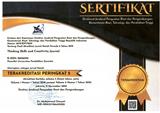Fenomena Kaunan dalam Masyarakat Toraja dari Perspektif Emmanuel Levinas
DOI:
https://doi.org/10.23887/jfi.v6i2.53594Keywords:
Kaunan, Toraja, The other, ResponsibilityAbstract
The focus of this study is to see and reveal how the relationship of kaunan in Toraja society is. The author wants to see why kaunan is looked down upon in a society that basically they are human beings who think and feel. and the author also wants to see how the relationships that are built in their despised condition are. does kaunan not have uniqueness? Aren't they also unique creations? What phenomenon makes them looked down on so low? The methodology used in this study is qualitative with a phenomenological approach, namely by allowing the subject to present himself as he is without any limiting ideas. Data were obtained by reading related literature and in-depth interviews. By using the perspective of Emmanuel Levinas, it will be seen how the causal relationality is. As the findings in this paper is that the relationship is a relationship of responsibility with the concept of family as responsibility for the presence of others. In line with what Levinas said, we must be responsible for the presence of the other (the other). Kaunan is looked down upon because of the universal idea. In the encounter between kaunan and To sugi', the relationship that is built is an asymmetrical relationship.
References
Alfarah, A. S. Y., Saputra, F. B., Mukminin, M. S., Pangesti, P. W., Azizah, S. F., & Ediyono, S. E. (2021). Rambu Solo’ Sebagai Upacara Pemakaman Jenazah di Tana Toraja (Tinjauan Wujud dan Unsur Kebudayaan). Research Gate.
Andilolo, Y. (2021). Dekonstruksi Makna Tana’ sebagai Struktur Sosial Padan Dipuangi Tana Toraja. Sintax Literate: Jurnal Ilmiah Indonesia, 6.
Barclay, M. N. (1993). Kamus Yunani-Indonesia untuk Perjanjian Baru. BPK Gunung Mulia.
Bertens, K. (2019). Sejarah Filsafat Menurut Garis Besarnya. In Widiantoro (Ed.), Pengantar Filsafat. PT Kanisius.
Buntu, I. S. (2020). Analisis Relasi Wajah dalam Tradisi Pangngan Manusia Toraja Melalui Filsafat Tanggung Jawab Wajah Levinas. In Teologi Kontekstual & Kearifan Lokal Toraja (1st ed.). BPK Gunung Mulia.
Dounglas, J. D. (1992). Ensiklopedi Alkitab Masa Kini. Yayasan Komunikasi Bina Kasih/ OFM.
Hardiman, F. B. (2021). Aku Klik maka Aku Ada (Erdian (ed.)). PT Kanisius.
Haryatmoko. (2009). Proses Mediasi ke Momen Moral dalam “Pemahaman Diri” Ricoeurdan “Penampakan Wajah” Levinas. Studia Philosophica et Theologica, 9, 123–138.
Hasan, B. (2020). Liyan-kah Perempuan? Betang Filsafat.
Jauhari, A. (2016). Konsep Metafisika Emmanuel Lévinas. YAQZAN: Analisis Filsafat, Agama dan Kemanusiaan, 2, 15–25.
K.Bertens. (2014). Filsafat Barat Kontemporer: Prancis (5th ed.). PT Gramedia Pustaka Utama.
Malka, S. (2002). Emmanuel Levinas: His life and Legacy (M. Kigel & S. M. Embree (trans.)). Pennsylvania: Duquesne University Press.
Melda, F. S. (2017). Kaunan dan To Ma’dika. Sekolah Tinggi Agama Kristen Negeri Toraja.
Pandor, P. (2014). Seni Merawat Jiwa Tinjauan Filosofis (Y. Lesek (ed.); 1st ed.). OBOR.
Patiung, O. (2013). Kedudukan Anak Kaunan yang Diangkat oleh To Parengnge’ (Kaum Bangsawan) dalam Pembagian Masyarakat Tondon di kabupaten Toraja Utara. CORE.
Riyanto, A. (2011). Berfilsafat Politik. Kanisius.
Riyanto, A. (2018). Kearifan Lokal-Pancasila: Butir-butir Filsafat “Keindonesiaan.” In A. Riyanto, J. Ohoitimur, C. B. Mulyatno, & O. G. Madung (Eds.), Kearifan Lokal Pancasila: Butir-Butir Filsafat Keindonesiaan (pp. 13–42). PT Kanisius.
Riyanto CM, F. E. A. (2019). Relasionalitas: Filsafat Fondasi Interpretasi Aku, Teks, Liyan, Fenomen (Widiantoro (ed.)). PT Kanisius.
Sobon, K. (2018). Etika Tanggung Jawab Emmanuel Levinas. Jurnal Filsafat, 28(1), 47. https://doi.org/10.22146/jf.31281
Sobur, A. (2013). Filsafat Komunikasi: Tradisi dan Metode Fenomenologi (N. N. Muliawati (ed.); 1st ed.). PT Remaja Rosdakarya.
Tammu, J., & Ven, V. Der. (2016). Kamus Toraja-Indonesia. PT Sulo.
Tangdilintin, L. T. (1981). Toraja dan Kebudayaannya (4th Ed.). Yayasan Lepongan Bulan.
Timbang, Y. F. T. (2020). Makna Pengorbanan Babi dalam Ritual Tradisional Toraja. In Teologi Konteksual & Kearifan Lokal Toraja (pp. 199–220). BPK Gunung Mulia.
Tjahjadi, S. P. L. (2016). Petualangan Intelektual: Konfrontasi dengan Para Filsuf dari Zaman Yunani Hingga Zaman Modern. PT Kanisius.
Tjaya, T. H. (2018). Emmanuel Levinas: Enigma Wajah Orang Lain (2nd ed.). KPG (Kepustakaan Populer Gramedia).
Tobing, D. (2018). Mencari Keadilan Bersama Yang-Lain: Pandangan Etis-Politis Emmanuel Levinas (Taufiqurrahman (ed.); 1st ed.). Aurora.
Tomatala, Y. (2006). Antropologi: Dasar Pendekatan Pelayanan Lintas Budaya. Media penerbit kristen YT Leadership Foundation.
W., B. T. (2019). Sejarah Sosial Tana Toraja. Ombak.
Downloads
Published
Issue
Section
License
Copyright (c) 2023 Jurnal Filsafat Indonesia

This work is licensed under a Creative Commons Attribution-ShareAlike 4.0 International License.

Jurnal Filsafat Indonesia Undiksha is licensed under a Creative Commons Attribution-ShareAlike 4.0 International License.



